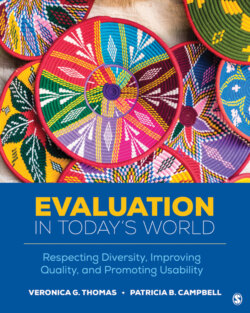Читать книгу Evaluation in Today’s World - Veronica G. Thomas - Страница 116
На сайте Литреса книга снята с продажи.
Intersection Between Education and Evaluation Pre–20th Century
ОглавлениеEvaluation, in large part, as practiced today evolved from pre-20th-century work in two areas of education: student assessment and measurement and the accreditation of schools and colleges. Many contemporary evaluation methods and procedures, such as the use of comparison groups, standardized testing, and surveys, are built on systematic strategies and techniques that were applied in the 1600s in the field of education.
The first evidence of formal educational program evaluation recognized in the United States took place between 1897 and 1898 when Joseph Mayer Rice evaluated the spelling performance of 33,000 students in relation to their spelling instruction (Madaus & Stufflebeam, 2000). Because of this groundbreaking work, Rice is recognized as a pioneer of educational research and the originator of comparative methodology in the field. Further, Rice’s work remains critical in the history of evaluation because it began a long tradition of using achievement test scores, or standardized testing, as a key indicator for judging the effectiveness of a school or instructional program (Madaus & Stufflebeam, 2000; Morra-Imas & Rist, 2009).
Educational accreditation in this country represents another major and long-standing influencer on educational evaluations (Kellaghan, Stufflebeam, & Wingate, 2003). The first regional accrediting agencies formed in the 1880s with particular focus on educational standards and admissions procedures. Accreditation of educational institutions was conceived of as a quality assurance process whereby educational institutions, programs, services, and operations are evaluated and verified by an external body to determine if recognized standards are met. It became (and continues to be) a means of conducting nongovernmental peer evaluations of educational institutions and programs.
